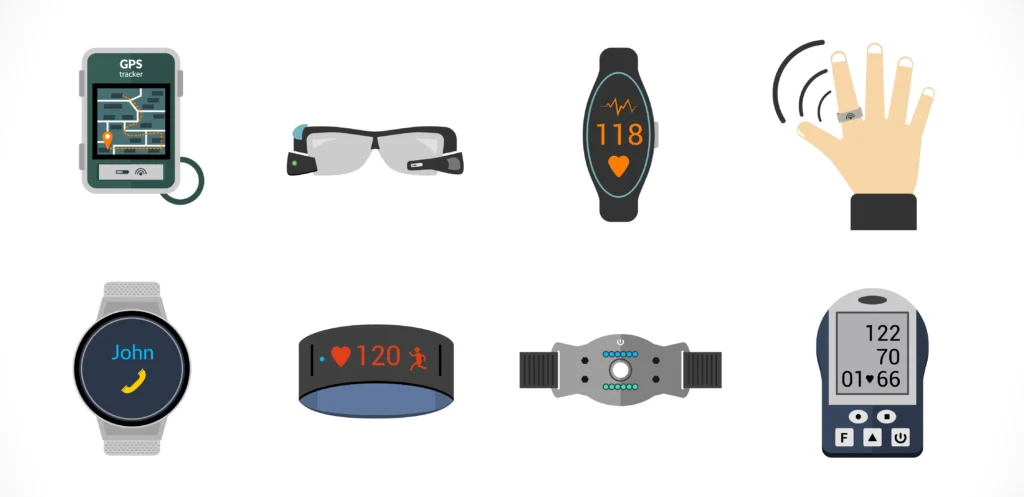Wearable devices like fitness trackers, smartwatches, AR glasses, and smart rings are transforming how we leverage technology for health, productivity, and connectivity. However, these advancements introduce significant dangers of wearable tech, including cybersecurity vulnerabilities that threaten personal and corporate data. At Southridge Technology, we specialize in robust cybersecurity solutions to protect individuals and businesses from these evolving risks. This article explores the core dangers of wearable tech, actionable cybersecurity strategies, a real-world scam, and emerging threats—arming you with the knowledge to stay secure in 2025.
If you’re searching for “dangers of wearable tech” or “cyber security for wearable technology,” this guide provides expert insights backed by the latest trends.
Uncovering the Dangers of Wearable Tech in CyberSecurity
Wearable technology drives innovation, enabling seamless tracking of fitness, health, and communication. Yet, the dangers of wearable tech extend beyond convenience, posing serious cybersecurity risks. These devices collect extensive sensitive data—biometric details, location patterns, and behavioral habits—that, if compromised, could enable identity theft, targeted attacks, or data exploitation.
Always-On Connectivity: A CyberSecurity Risk
Wearables depend on Bluetooth, Wi-Fi, or cellular networks to sync with apps and devices. Without strong encryption, hackers can intercept data, impersonate devices, or inject malware. The constant connectivity of this technology makes it a prime target, amplifying the dangers of wearable tech.
Extensive Data Collection: Hidden Vulnerabilities
Beyond basic metrics, wearables track:
-
Location and daily movements
-
Sleep patterns and stress indicators
-
Voice commands and audio inputs
-
Health and biometric information
-
App interactions and user preferences
Such comprehensive data collection heightens privacy risks, as leaks could allow cybercriminals to create detailed profiles for malicious use.
Insecure Defaults and Neglected Updates
Many wearables ship with weak passwords, open ports, or vulnerable pairing methods. Infrequent or manual updates leave these flaws in technology unpatched, increasing the dangers of wearable tech without proper cyber security maintenance.
Third-Party App Vulnerabilities
Wearable technology ecosystems often include add-on apps for features like health coaching or fitness challenges. These apps may request excessive permissions or transmit data to unverified servers, escalating cyber security threats for users and organizations.
Workplace Risks: An Unseen Insider Threat
In professional settings, wearables can inadvertently record sensitive conversations, share locations in secure areas, or access corporate systems with minimal authentication. This transforms everyday technology into a subtle cyber security danger, bypassing traditional safeguards.
Southridge Technology’s cyber security experts recommend regular audits to mitigate these dangers of wearable tech and strengthen your organization’s defenses.
Is Your Technology Spying on You? Detecting and Preventing Wearable Breaches
Worried about “dangers of wearable tech spying”? The continuous data flow and connectivity of these devices can turn them into surveillance tools if unsecured. Protect yourself with stringent privacy settings and proactive cyber security monitoring.
CyberSecurity Best Practices for Wearable Technology
Countering the dangers of wearable tech is straightforward with the right approach. Here are tailored cyber security best practices for individuals and businesses:
For Individuals
-
Secure Your Settings: Immediately change default credentials. Disable non-essential features like GPS, Bluetooth, or voice assistants when not in use. Opt out of unnecessary data collection.
-
Choose Apps Wisely: Download only from trusted platforms like the Apple App Store or Google Play. Scrutinize permissions for location, camera, microphone, or contacts. Limit third-party integrations.
-
Stay Updated: Enable automatic updates and regularly check for firmware patches. Retire unsupported devices to eliminate persistent vulnerabilities.
For Businesses
-
Enhance BYOD Policies: Incorporate wearables into Bring Your Own Device (BYOD) frameworks, defining rules for sensitive areas and requiring device registration for network access.
-
Educate Employees: Train staff on data collection risks through simulations and quizzes, emphasizing how subtle technology can pose significant dangers.
-
Monitor and Audit: Use endpoint detection tools to identify unusual connections, enforce multi-factor authentication (MFA) for app access, and review logs regularly.
Implementing these cyber security measures significantly reduces the dangers of wearable tech. Southridge Technology offers customized training and tools to seamlessly integrate these practices.
Red Flags to Watch
-
Extensions demanding full browser access, risking exposure of sensitive inputs.
-
Unknown developers without ties to reputable companies.
Protective Measures
-
Install only from verified developers with official websites.
-
Avoid extensions with broad permissions; consult IT if unsure.
-
Regularly review extensions and source from trusted repositories.
This scam highlights broader cyber security risks in technology, including those linked to wearables. Contact Southridge Technology for expert scam prevention guidance.
Future Dangers of Wearable Tech: What’s on the Horizon
As wearable technology evolves, so do its cyber security challenges. Emerging dangers include:
-
AR Glasses and Smart Lenses: With built-in cameras and microphones, these could covertly capture proprietary data, enabling espionage or privacy violations.
-
Smart Fabrics and Biometric Sensors: Continuous health monitoring raises concerns about data leaks or misuse, potentially leading to discrimination.
-
Brain-Computer Interfaces (BCIs): Neural data collection introduces ethical and security risks, such as thought interception or manipulation.
-
Interconnected Ecosystems: Integration with IoT systems means a single flaw could cascade across homes, workplaces, and infrastructure, exploiting inconsistent standards.
Staying Ahead
-
Thoroughly vet new technology before adoption.
-
Limit data access to essentials.
-
Update policies to align with evolving privacy regulations.
Southridge Technology leads the charge in addressing these future dangers of wearable tech with innovative cyber security solutions.
Conclusion: Securing Technology Against Wearable Risks
Wearable technology offers unparalleled benefits, but ignoring its cyber security dangers can lead to costly breaches. By adopting these strategies and staying vigilant, you can enjoy the advantages securely. For businesses tackling “dangers of wearable tech,” Southridge Technology provides tailored audits and protections.
Ready to secure your wearables? Get in touch with Southridge Technology at 203.431.8324 or email us at support@southridgetech.com for a free consultation. Subscribe to our blog for ongoing insights on technology, cyber security, and more.
Keywords: dangers of wearable tech, cybersecurity, technology, wearable technology risks, secure wearables, cyber threats in tech





